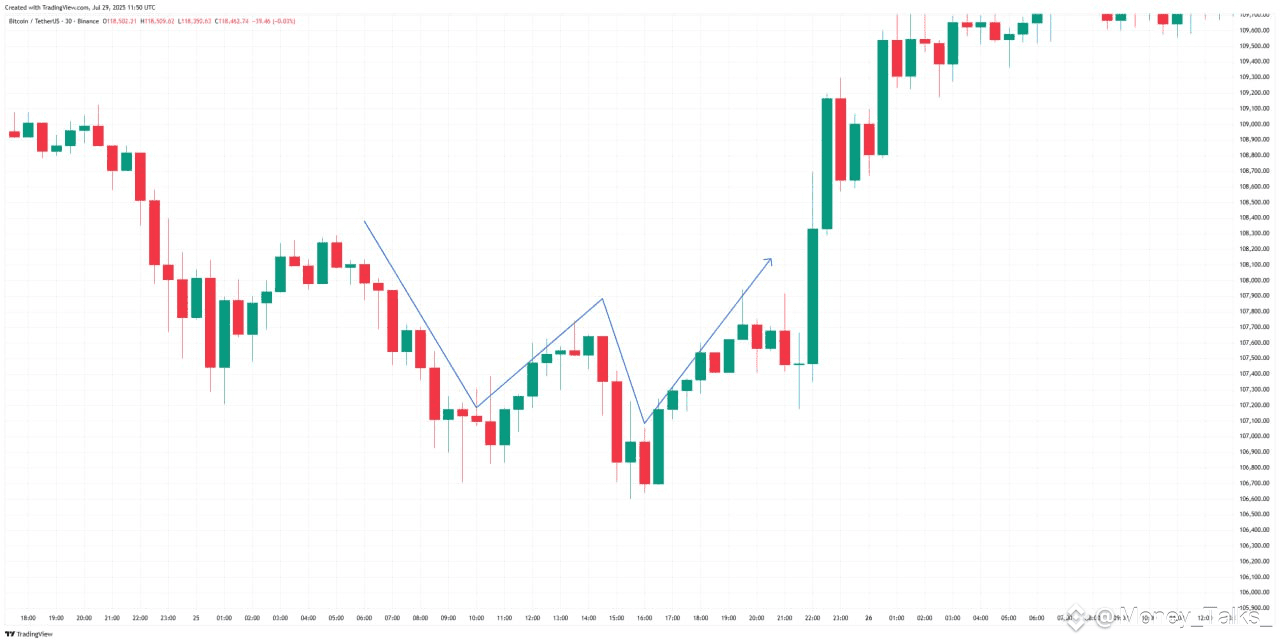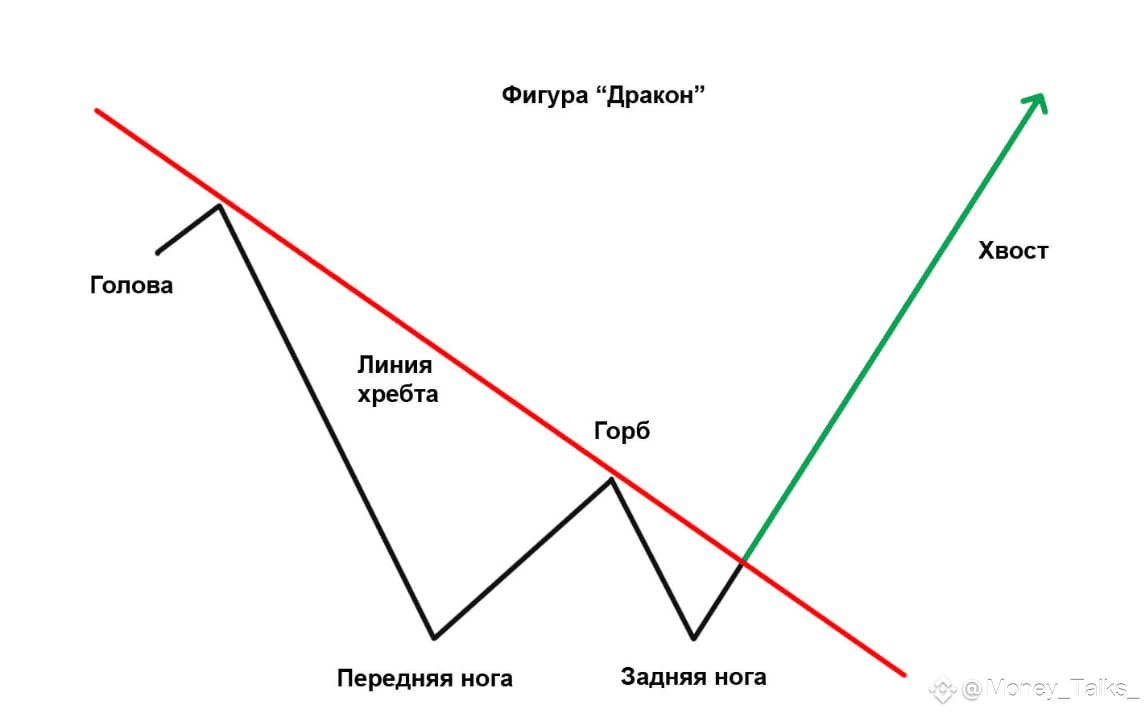🕯 All about the Dragon pattern
The Dragon pattern is a rather rare but powerful bullish reversal pattern that signals a possible change from a downtrend to an uptrend. It is a more complex, but often more reliable alternative to a double or triple bottom.
🎮 Pattern structure:
▪️ Dragon head: the highest point of the pattern, preceding its formation, is the beginning of a downward movement.
▪️ First paw: the first significant minimum after the dragon head, followed by a rebound.
▪️ Second paw: the second minimum, which is formed below or at about the same level as the first paw. It is important that the second paw is below or at the same level as the first, indicating the end of the downward impulse.
▪️ Dragon's Back: A resistance line that connects the top of the bounce between two legs and the subsequent highs, forming a kind of ridge.
▪️ Dragon's Tail: Begins after the breakout of the Dragon's Back and indicates the beginning of a new upward move.
🤓 How to use the Dragon pattern:
🔹 Identification: Look for a clearly defined head, two consecutive legs and a distinct back.
🔹 Back Breakout: The main buy signal occurs when the price breaks the Dragon's Back upwards. This indicates a change in dominance from sellers to buyers.
🔹 Profit Target: The distance from the Dragon's Head to the bottom of the second leg, plotted upwards from the breakout point of the back. You can also use Fibonacci extensions from the first leg to the bounce and the second leg.
🧐 Application strategies:
🔸 Buy on breakout: the most common strategy is to enter a position immediately after a confirmed breakout of the dragon's back.
🔸 Back retest: sometimes the price may return to retest the back before continuing to rise. This can be an additional entry point or confirmation of the signal.
🔸 Volume: the volume is usually large on the head and first leg, decreasing as the second leg forms, and sharply increasing when the dragon's back is broken. This confirms the strength of the pattern.
🔸 Divergences: look for bullish divergence in oscillators (such as RSI or MACD) between the first and second legs (when the price makes a new low, and the indicator makes a higher low). This strengthens the signal.
✔️ Recommendations:
🔻 Trend context: the Dragon pattern is most reliable after a prolonged downtrend, signaling its exhaustion.
🔻 Confirmation: Always wait for a clear and confirmed breakout of the dragon's back with increased volume.
🔻 Stop Loss: Place a stop loss below the second paw to protect capital.
🔻 Multiple confirmations: The more confirming factors (volume, divergences, retest), the higher the probability of success.
☝️ Remember: the Dragon pattern is a powerful reversal signal, which shows that bearish pressure is weakening, and the bulls are ready to take the initiative.
What other non-standard patterns do you know?


